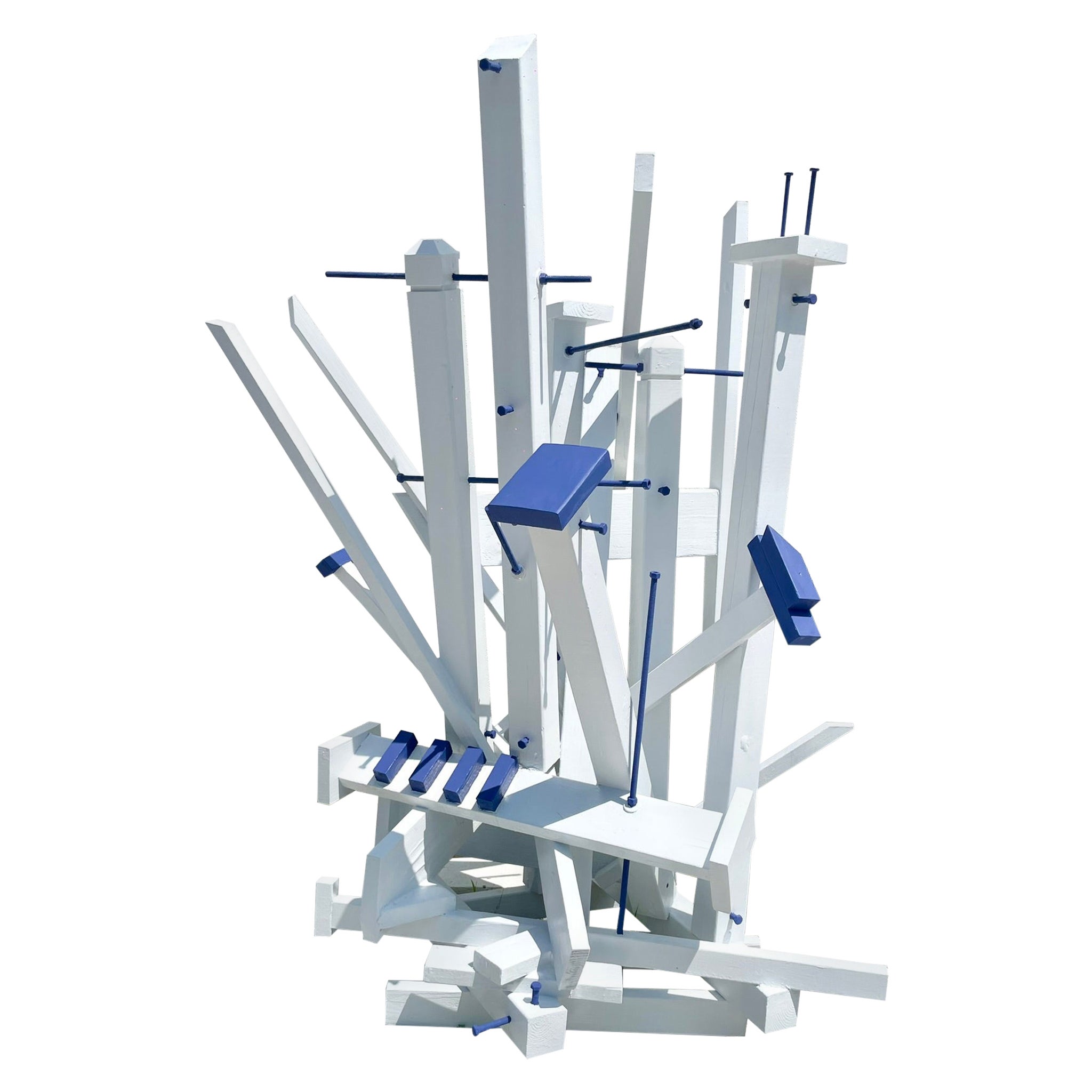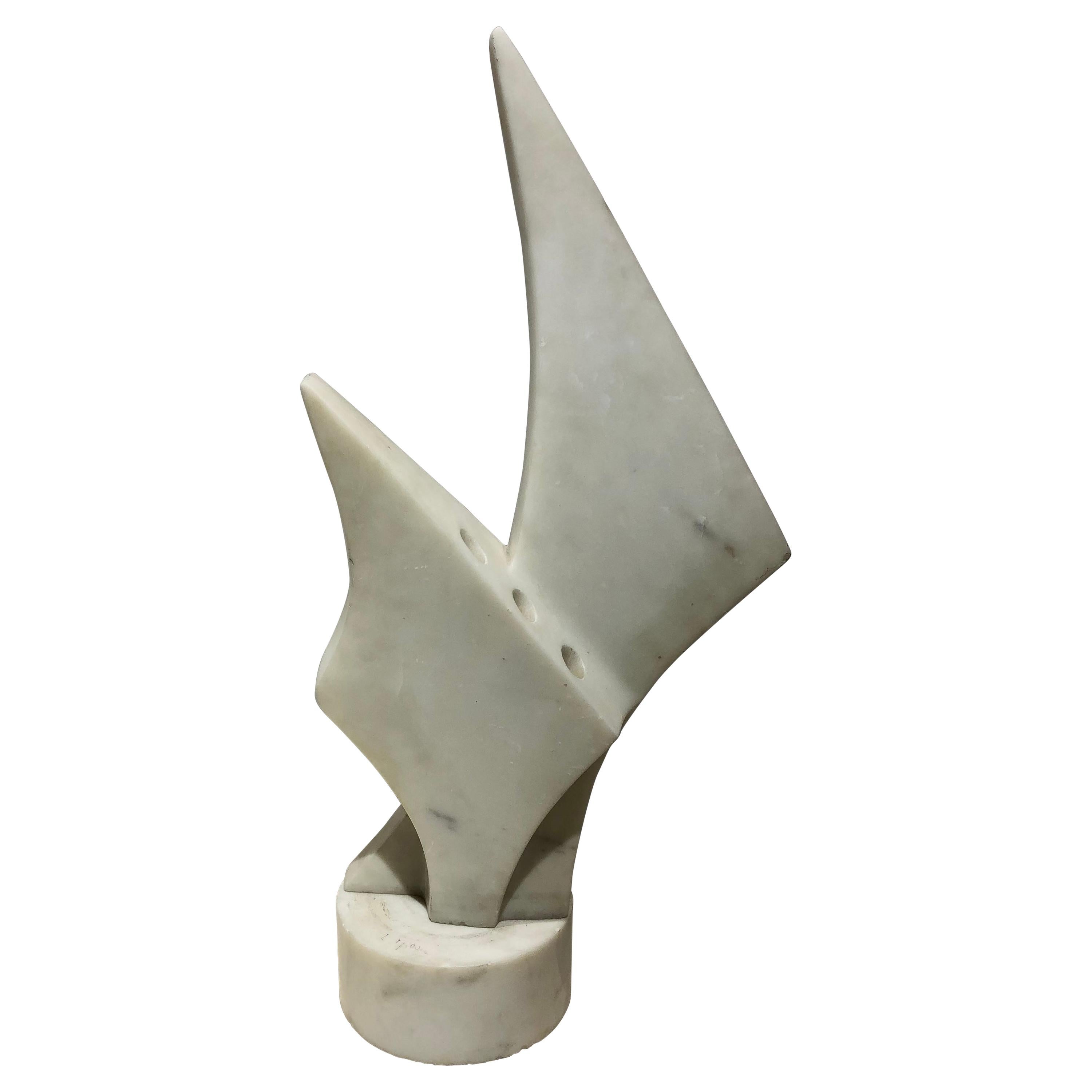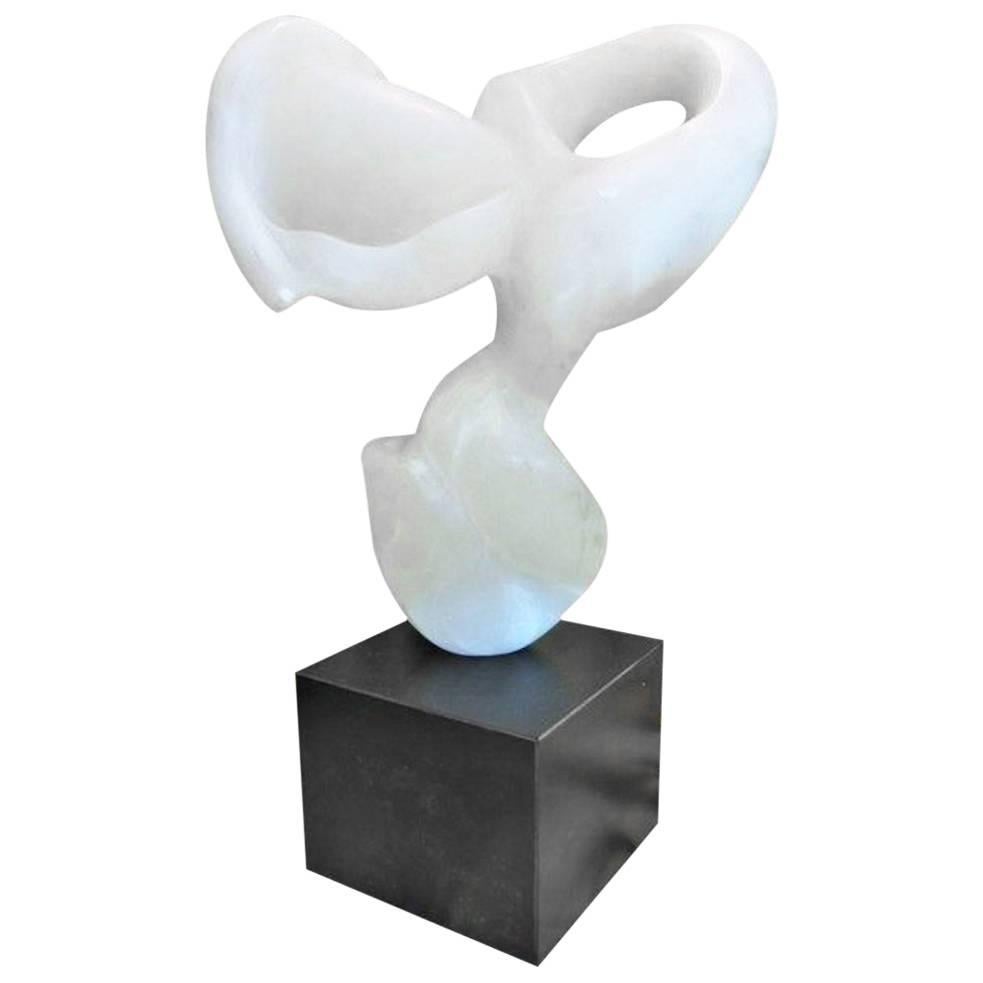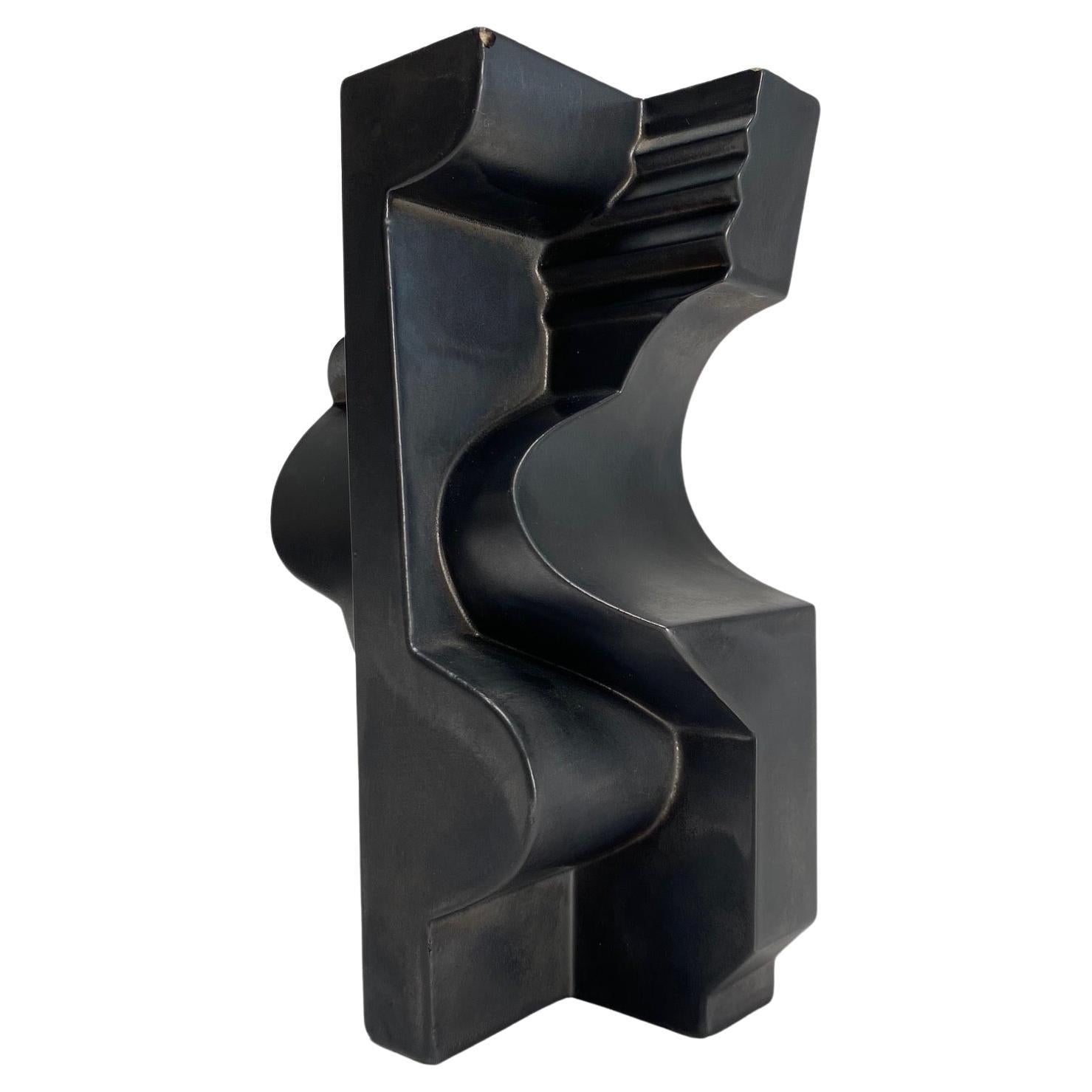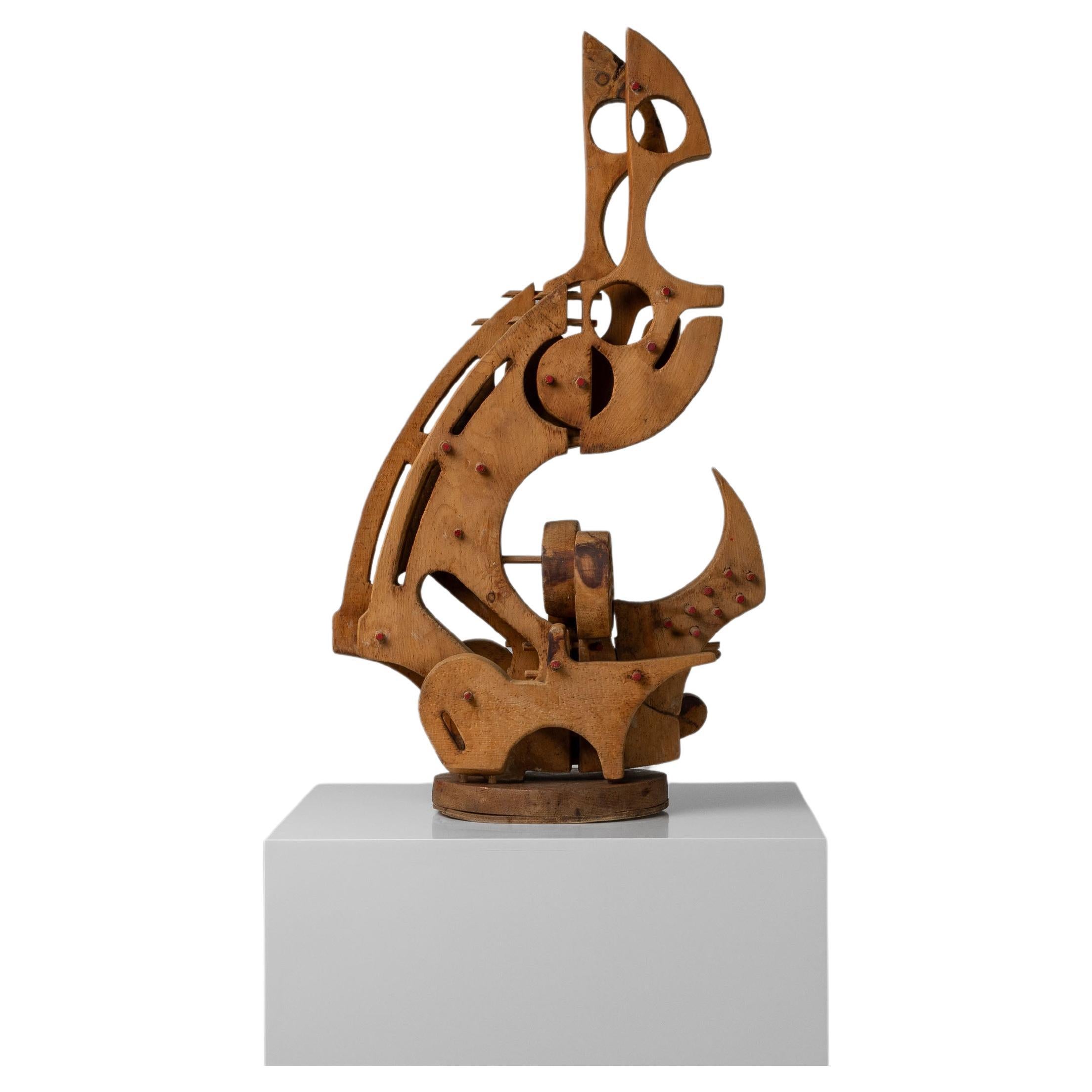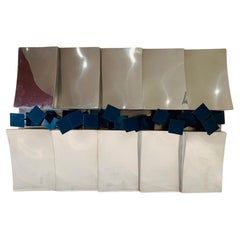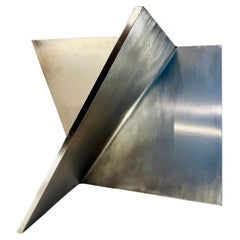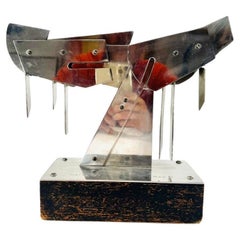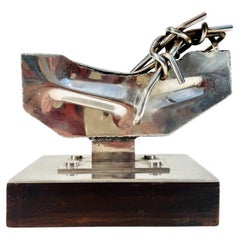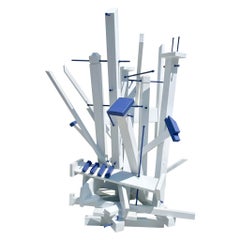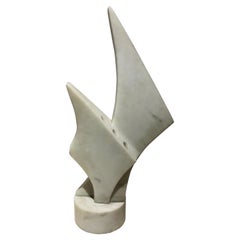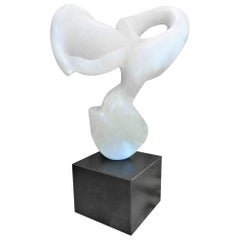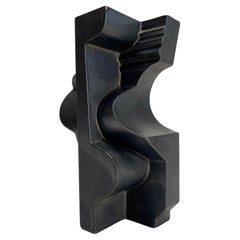Items Similar to Emanoel Araujo brazilian sculpture in fiberglass and wood polychrome circa 1980
Want more images or videos?
Request additional images or videos from the seller
1 of 7
Emanoel Araujo brazilian sculpture in fiberglass and wood polychrome circa 1980
$12,600
£9,565.71
€10,941.13
CA$17,604.03
A$19,579.52
CHF 10,223.82
MX$238,261.94
NOK 130,573.75
SEK 122,455.14
DKK 81,657.82
Shipping
Retrieving quote...The 1stDibs Promise:
Authenticity Guarantee,
Money-Back Guarantee,
24-Hour Cancellation
About the Item
Incredible EMANOEL ARAUJO abstract sculpture in fiberglass and wood signed and polychrome circa 1980.
- Creator:Emanoel Araújo 1 (Artist)
- Dimensions:Height: 37.41 in (95 cm)Width: 42.13 in (107 cm)Depth: 16.93 in (43 cm)
- Style:International Style (Of the Period)
- Materials and Techniques:
- Place of Origin:
- Period:1980-1989
- Date of Manufacture:1980
- Condition:
- Seller Location:Rio De Janeiro, BR
- Reference Number:1stDibs: LU8821236994322
About the Seller
5.0
Vetted Professional Seller
Every seller passes strict standards for authenticity and reliability
Established in 1981
1stDibs seller since 2023
7 sales on 1stDibs
Typical response time: 13 hours
- ShippingRetrieving quote...Shipping from: Rio De Janeiro, Brazil
- Return Policy
Authenticity Guarantee
In the unlikely event there’s an issue with an item’s authenticity, contact us within 1 year for a full refund. DetailsMoney-Back Guarantee
If your item is not as described, is damaged in transit, or does not arrive, contact us within 7 days for a full refund. Details24-Hour Cancellation
You have a 24-hour grace period in which to reconsider your purchase, with no questions asked.Vetted Professional Sellers
Our world-class sellers must adhere to strict standards for service and quality, maintaining the integrity of our listings.Price-Match Guarantee
If you find that a seller listed the same item for a lower price elsewhere, we’ll match it.Trusted Global Delivery
Our best-in-class carrier network provides specialized shipping options worldwide, including custom delivery.More From This Seller
View AllYutaka Toyota brazilian steel and wood wall sculpture 1982
By Yutaka Toyota
Located in Rio De Janeiro, RJ
Incredible YUTAKA TOYOTA steel wall sculpture polychromed in blue in perfect conditions signed and dated 1982.
Category
Vintage 1980s Brazilian Modern Abstract Sculptures
Materials
Steel
Franz Weissmann Brazilian Abstract Sculpture steel !979
Located in Rio De Janeiro, RJ
Incredible abstract sculpture in steel by Franz Weissmann 1979
Category
Vintage 1970s Brazilian International Style Abstract Sculptures
Materials
Steel
Nicolas Vlavianos steel 1974 sculpture with wood base signed
By Nicolas Vlavianos
Located in Rio De Janeiro, RJ
Incredible NICOLAS VLAVIANOS brazilian steel 1970 abstract sculpture with wood base.
Category
Vintage 1970s Brazilian International Style Abstract Sculptures
Materials
Steel
Nicolas Vlavianos Greek steel 1974 sculpture with wood base signed
By Nicolas Vlavianos
Located in Rio De Janeiro, RJ
Incredible steel sculpture with wood base signed VL 74 to Nicolas Vlavianos 1974
Category
Vintage 1970s Greek International Style Abstract Sculptures
Materials
Steel
Airin Canedo brazilian multicolor sculpture circa 1990
Located in Rio De Janeiro, RJ
Incredible AIRIN CANEDO multimaterials sculpture circa 1990.
Category
1990s Brazilian International Style Mounted Objects
Materials
Metal, Other
Steel Sculpture by Nicolas Vlavianos, 1970
By Nicolas Vlavianos
Located in Rio De Janeiro, RJ
Steel sculpture signed and dated Vlavianos in perfect conditions.
Category
Vintage 1970s Greek International Style Abstract Sculptures
Materials
Steel
You May Also Like
Wood And Metal Sculpture By Architect Alexandre Ferucci, 1970s
By Alexandre Ferucci
Located in Los Angeles, CA
Beautiful combination of wood and metal in white and Yves Klein blue. Indoor or outdoor sculpture.
Category
Late 20th Century American Mid-Century Modern Abstract Sculptures
Materials
Steel
$4,800 Sale Price
31% Off
Sculpture by Luiza Miller, 1970
By Luiza Miller 1
Located in Saint-Ouen, FR
Sculpture by Luiza Miller
Carrara marble from 1970.
Category
20th Century Brazilian Mid-Century Modern Abstract Sculptures
Materials
Carrara Marble
Abstract Sculptural Composition, American, circa 1970s
Located in New York, NY
This very unusual alabaster abstract sculpture is a quintessential example of the American figurative arts in the 1970s, but will definitely be a great addition to any stylish interi...
Category
Vintage 1970s American Modern Abstract Sculptures
Materials
Alabaster
Nino Caruso, Abstract sculpture in glazed ceramic, Italy, 1974
By Nino Caruso
Located in Argelato, BO
Nino Caruso ( Tripoli 1928 - Rome 2017 )
Abstract Sculpture in Black Glazed Ceramic. 1974, Signed and dated under the base.
Italian ceramist, sculptor and...
Category
Vintage 1970s Italian Modern Abstract Sculptures
Materials
Ceramic
$1,341 Sale Price
20% Off
Geometric Sculpture by Ken Bentley
Located in Dallas, TX
Green geometric sculpture by Ken Bentley.
Ken Bentley
San Antonio architect and sculptor, Bentley is a University of Texas at Austin graduate a...
Category
21st Century and Contemporary American Modern Abstract Sculptures
Materials
Steel
Valerio Moreschi sculpture Brescia Italy 1979
Located in Roosendaal, Noord Brabant
Large sized abstract sculpture by Valerio Moreschi made in is own workshop in Brescia 1979. Hectic dynamics, burst of imagination and exp...
Category
Vintage 1970s Italian Mid-Century Modern Abstract Sculptures
Materials
Pine
More Ways To Browse
1980 Furniture Wood
Polychrome Sculptures
Polychrome Wood Sculpture
Emanoel Araujo
Antique Stone Hitching Post
Bob Crooks
Bronze Gunther
Cedar Driftwood
David Tothero
Erma Italy
Francesco Somaini Sculpture
Francoise Jeffrey
Gaetano Pesce Invitation
Heike Brachlow
Heron Martinez Mendoza
Heron Martinez
Initials Jm
Jesse Jay Mcvicker
